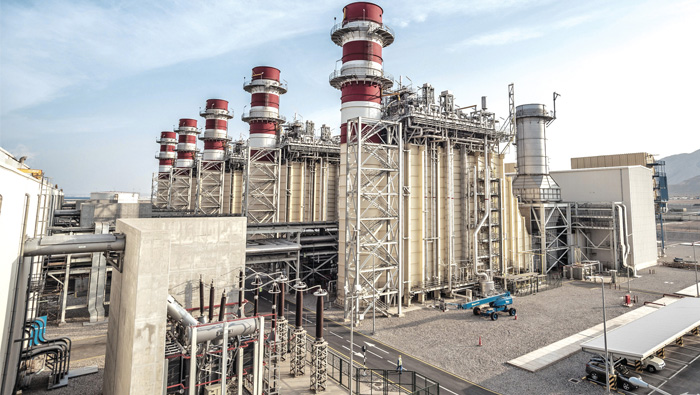
Muscat: State-owned Oman Power and Water Procurement Company (OPWP) said it will propose several alternative fuel options for future power and desalination plants in case the Sultanate’s government is unable to commit natural gas for utility projects.
These options include discussion with government about the feasibility of importing natural gas for the use in power plants, new plants based on a fuel other than gas, use of optional arrangements included in the Barka III and Sohar II for using liquid fuel instead of gas.
“The Ministry of Oil and Gas has indicated that future gas supply is constrained, but with assurances that the power sector has a priority for future gas allocations. While Ministry of Oil and Gas has committed to supplying gas for the planned capacity additions in Salalah, Ibri and Sohar, gas availability for later plants is not assured,” said a seven-year outlook for power and water demand, released by OPWP.
The primary fuel resource for power generation and associated water production in the main interconnected system in Oman is natural gas, supplied to power and desalination plants by the Ministry of Oil and Gas.
Natural gas consumption
The OPWP consults Ministry of Oil and Gas on a regular basis in order to confirm the future availability of gas for power generation (and associated water production) and to coordinate planning.
Oman’s peak average annual power demand growth for the next seven years within the areas of main inter-connected system (MIS) is projected to be 8 per cent, rising from 5,565 megawatt (MW) in 2015 to 9,529 MW in 2022, said the OPWP report.
Total gas consumption at the main power and desalination plants in 2015 was about 7.4 billion standard cubic meters (Sm3), equivalent to 20.2 million Sm3/d, about 4 per cent more than in 2014. The peak daily gas consumption in 2015 was 27.7 million Sm3, slightly lower than in 2014.
“The modest 4 per cent growth in gas requirements contrasts with a significant 13 per cent increase in electricity generation over the same period.”
Overall, fuel consumption is expected to increase at an average rate of about 4 per cent per annum over the next seven years. Under the low case demand scenario, fuel consumption increases at an average of 1 per cent per year, whilst in the high case demand scenario, it grows at an average rate of 7 per cent per annum. In each of the three scenarios, the rate of growth in fuel consumption is well below that of electricity demand.
Electricity generation
Continuing improvements in the efficiency of power supply have held back the growth rate in fuel requirements.
Over the next seven years, OPWP expects that an increasing share of power generation will be provided by the most efficient plants, contributing to a further 25 per cent improvement in MIS gas utilisation by 2022. Another significant contributor is the shift from MSF to reverse osmosis technology for water desalination. This is expected to allow some of the combined power and water plants to be operated less intensively in favour of the newer and more efficient power-only IPPs.
Transmission
The OPWP and the Oman Electricity Transmission Company (OETC) have been cooperating for continuous improvement in generation dispatch operations, to take full advantage of the newer generation plants while honouring the network security constraints that assure reliable power supply.
The OETC is in the process of developing a 400 kV transmission backbone and new dispatch control technology that together will support more efficient dispatch, while the OPWP will contribute advanced system simulation to support economic dispatch decision-making.